#so that's why her wardrobe is consistent of plain earthy colors
Explore tagged Tumblr posts
Photo
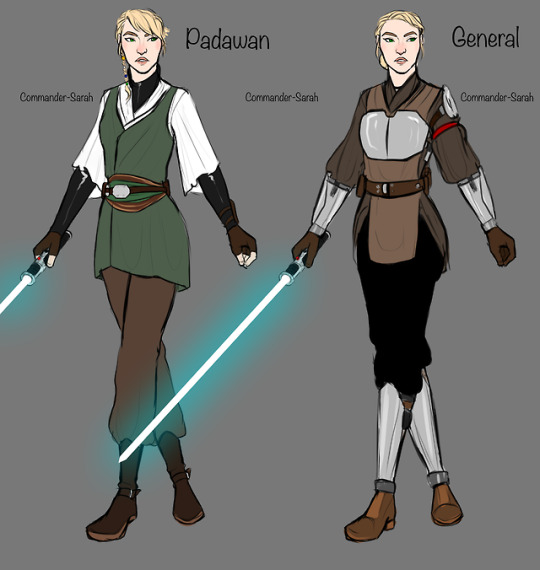
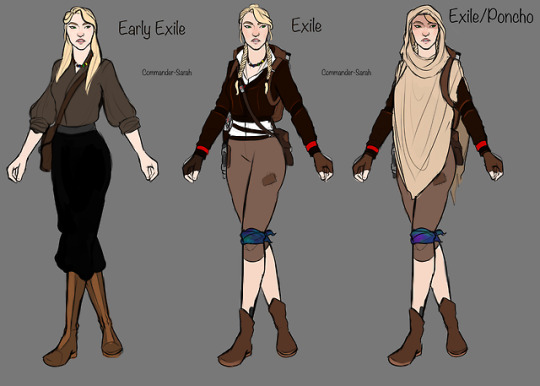
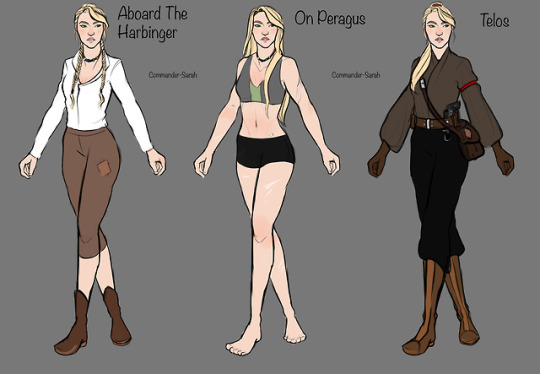
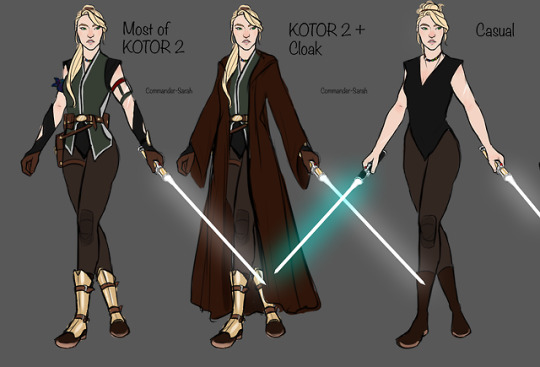

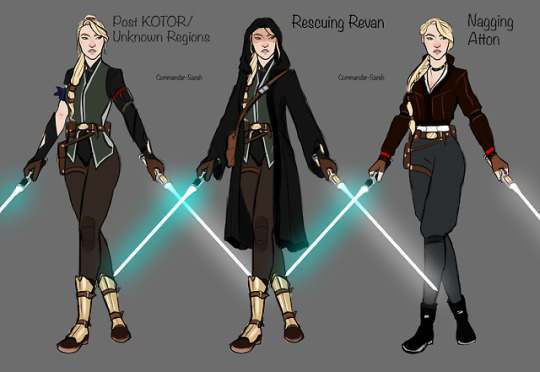
and bc i can’t be stopped when it comes to these and i’ve been real deep into KOTOR 2 feels again, heres my Exile, Kailan Surik���s, closet, I’ve only had this sitting around done for months now.. woops.
#Kailan Surik#The Jedi Exile#Knights of the old republic II#KOTOR 2#My Art#My OC#Fun facts of the day#She's from Gatalenta#so that's why her wardrobe is consistent of plain earthy colors#and one red arm band#And the shiny cloth on her arm and leg is#a shimmersilk scarf that Rana (my revan) used to wear back in the war#she keeps it as a way of keeping Rana alive bc she doesnt believe that#Rana every truly came back#and when she finds revan in the unknown regions and they get away#boy you do not want to hear the words Kailan had for her#bc they were NOT nice
557 notes
·
View notes
Text
fashion in zhonghua --
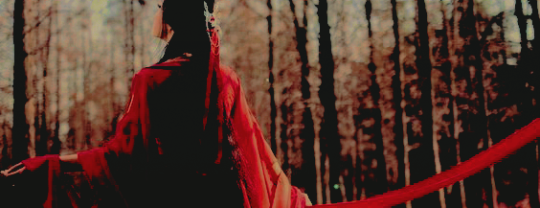
although zhonghua fashion is primarily influenced by the ming and tang dynasties, i’ve incorporated bits and pieces of others. during the spring and summer women wear tang dynasty-influenced fashion. in the fall and winter, ming dynasty fashion is the trend. however, just as many dramas aren’t 100% true to their respective dynasties, i’m not strict on ming or tang dynasty fashion.
fall and winter fashion:


the clothing of choice for women in the colder seasons. this is a more down to earth hanfu and the style is known to people of all classes. a jacket is worn over the hanfu, usually slit at the sides but not always. the skirt of the hanfu is often pleated. the distinguishing factors in what separated the upper and lower classes are both the cut and fabric. commoners clothing were usually shorter in length, both in sleeve and dress/pants, the colors dull muted, skirt unpleated, and the fabric cheap. wealthy and noble classes were afforded elaborate colors and designs on their clothing, as welll as the best fabrics. elaborate hats and hair ornaments were also solely worn by the upper class, almost exclusively nobles and royalty. there were strict rules on the hair ornaments that certain classes could wear without ‘impersonating’ royal or nobility. this rule was solid and would be in place year round.
in the fall through winter, colors that were popular were rich blues, greens, greys, and dark colors in general. among nobility and royalty, they wore the same in addition to purples, reds, and gold detailing -- which commoners were not allowed to wear. outfits made from gold fabric are usually only allowed among the royal family and royal concubines. to others, the color gold is merely an accent or secondary color.
spring and summer noble lady fashion:



summer is a time when many are out and about. and, as such, it is a time for many of the wealthy and nobility to parade their assets. wealth, beauty, their figure. it is especially a time for the upper class women of zhonghua to show off themselves for all to see. for a confidence boost, for potential marriage, none can quite slim it down to one reason.
often called a ‘fairy dress’, this outfit is defined by several layers of fabric that flow from a woman’s body and flatter it. the sleeves are often sheer and are always longer than the wearer’s actual arm length. a ribbon is wound around their chest, often lifting up their chest and giving a glimpse of cleavage -- if the person is bold enough. the dress portion usually consists of a simple pattern or is one solid color and pleated near the top. the fairy dress is accented by the must-have scarf that is wound around the woman’s back and arms and flows to the ground. when the wind blows, the woman is surely a vision of mystical and flowy wonder -- hence the name; fairy dress.
by older zhonghuans, this fashion is looked down upon and they prefer the more conservative fashion that commoners share.
spring and summer conservative/commoner fashion:



far more practical than the fairy dress and less costly as well. middle to elderly aged zhonghuan prefer this sort of hot weather hanfu, as well as commoners who cannot afford nor are allowed to wear fairy dresses. this hanfu is consists of an opaque robes, contrasting the sheer sleeves of the prior dress. although women do not take off their robes in public, it allows for a nice breeze and is good to work or walk in. it also allows for beautiful designs on the robes of the upper class. the dresses of such outfits are also usually pleated and there the statement of a complimenting ribbon is not left behind; usually around the wearer’s waist instead of chest. commoners do not usually wear ribbons, as dresses with ribbons are more costly and using fabric for ribbons is seen as wasteful.
hairstyles in zhonghua:
up until the time for their hair pinning days and capping ceremonies, the girls and boys of zhonghua usually wear their hair down. for all, men and women, hair is their crown and glory. so, hair is usually grown out as long as manageable. after hair pinning and capping, no respectable zhonghuan would be seen out in public with their hair down. for men, they usually pin their hair up in a bun or braid is in a long fishtail. they also wear caps, usually plain and black. princes usually put their hair in a bun and have a simple hair ornament to cover the bun, before inserting a jade or gold pin. the pin symbolizes their status.
hair is truly a statement for zhonghuan wealthy and noble women. there are so many elaborate hairstyles that they may style their hair with, several illustration books have been published to display them. events with nobility is truly a showcase for the hundreds of hairstyles that the women may do. it is so expansive that to be out in public with one’s hair down and unstyled is to be seen as lazy, even for commoners.

only a few of the styles women may have. those without ornaments or headdresses are the ones that commoners may have, as they are not allowed elaborate ornaments, jeweled pins, or headdresses. they may, however, use flowers, wooden pins, or simple headbands to accent their hair.

influences from the han dynasty are also used, such as this popular style.


a plainer style that could be seen on a minor noble, defined by the single pin. the more ornaments in their hair, the wealthier they are seen.

another simple hairstyle that commoners may have, including the flower. peony is known to frequent this style, which is why many view her as a modest princess, unmoved by displays of wealth.
also featured in this picture, the makeup trend of women in zhonghua. pale foundation, blackened eyebrows, red rogue, rosy eyelids, and rosy cheeks. women of the upper class also paint forehead designs known as hua dian -- usually a variation of petals or a flower.


more examples of the makeup trend in zhonghua
headdresses among the upper class and royalty:
as mentioned, common women may only wear flowers, plain pins, and simple headbands in their hair. the upper class may have gold ornaments, elaborate pins with beads and pearls dangling from them, and other accents for their hairstyles. the more ornaments, the wealthier they are seen as. the upper class are also the only ones who can afford earrings, too pricey for a simple budget. the separation from royalty comes in the form of what is considered crowns, which only the royal family may have access to.



a common headdresses for noblewomen





crowns, worn by princesses and noble consorts of previous emperors. duchesses (daughters of the previous reigning emperor) may also wear them.



crowns, worn by empresses and empress dowagers.



hats and headresses usually worn by princes.

headdress of the emperor, defined by the long beads covering his face.

a simple pin, usually worn by minor nobles and common men.
princess and empress fashion:






a princess is defined by the first three pictures; soft, billowy, and light. a princess is often adorned with several layers, at least one of them sheer, and in the winter will don fur around her collar. her wardrobe consists of youthful colors until she is married; in which she will wear more mature and earthy colors. an empress should be seen as bold and akin to a goddess, often donning hanfu with broad shouldered capes and statement colors; often a deep red, blue, and gold. elaborate red and gold hanfu, similar to what an empress may wear, are also afforded to the upper class at their own wedding. only princesses or those marrying into the royal family, however, may wear a crown.
male fashion:
much shorter than the female counterpart. men’s fashion is much simpler; common men wear plain and cheap clothing, noble men and royalty are afforded the better fabric with elaborate designs. only the emperor may wear gold that’s not simply an accent. often, a man’s wife or mother may embroider a design on their clothing, this goes for lower and upper class. court officials wear navy blue, accented by a gold embroidered design of their choosing in the chest center. male court officials/ministers also wear simple black hats, of finer fabric and a unique shape that separate them from others.

attire of a court official/minister/advisor, though they are all navy blue in zhonghua.

attire of a minor nobleman, very simple.



attire of a prince and wealthy nobleman. the hat is worn by princes, when they are on official business or simply out in public.
disclaimer: keep in mind that i’m mixing different dynasties fashion into one, as zhonghua has no set dynasty.
tagging: @nobleconsort -- because i thought you’d like to be tagging in something about zhonghua!
#∘⡊ ☾ ˚⊹ HEADCANON ⊹ — for the history books.#∘⡊ ☾ ˚⊹ ZHONGHUA ⊹ — the grassland is my home.#queue tag tba
27 notes
·
View notes
Text
Why I Liked SZA’s “Supermodel” MV
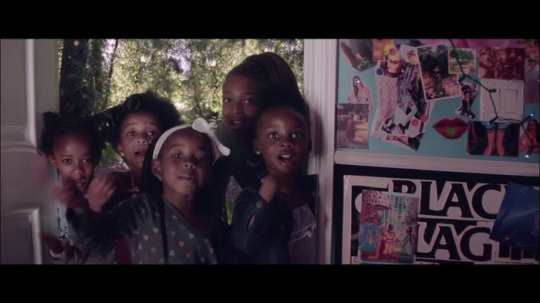
Before her debut studio album, Ctrl, was released, I first heard SZA featured on the ‘Consideration’ track from Rihanna’s ANTI (2016) album. My honest first impression of SZA was that she was a West Indian singer. Now that I think about it, I’m not so sure if it was done purposely because she was collaborating with the Bajan singer, or if it was because of her plain vocal ability. Maybe I was hearing it before that, but since then, SZA was a name I heard come out of people’s mouth every now and then. I thought nothing of it. Once her studio album was released, I was told by a very close (and young) relative of mine to give her a listen. Now, before I gave SZA any of my money, I downloaded one of her free mixtapes and I was a bit surprised. I never got much exposure to music growing up in a household that moderated whatever I watched and listened to, but [neo]soul and [PB]RnB were genres I fell in love with in college. Again, I thought she was an okay singer but after a couple of more listens, I decided to on a whim and give Ctrl a shot—after ‘Supermodel’, the first track on the album, played, I knew Ctrl would be one of those rare albums that I listened to for at least two years. Despite her average vocal range, I fell in love with SZA’s songwriting ability and scarce rhyming technique in verses.
Unable to get over the time a favored song of mine was ruined by a terrible music video, I haven’t watched many music videos. This included any of SZA’s music videos, other than ‘Love Galore (feat. Travis Scott)’ and it wasn’t worth an encore. So when the ‘Supermodel’ video came out, I was worried because it was a song that took time to grow on me. However, when I saw it, ‘Supermodel’ was a bizarre music video that I enjoyed watching over and over again. For those who don’t know, ‘Supermodel’ tells a story about a young woman in an unhealthy relationship with a boy who literally treats her like a joke. She vows to not want anything to do with him…but throughout the span of their relationship, she has developed insecurities and believes she can’t feel as confident as a “supermodel” without him.
The video starts off with SZA basically dismissing her boyfriend, who uncontrollably laughs at the sight of her. While dressing in the front of a mirror, she changes into an all black wardrobe consisting of a t-shirt, mesh robe, black heels and a thong with the letters “CTRL” on it. Suddenly, A young group of adorable, magical black girls call SZA from her bedroom closet. It acts as a portal to a fantasy-like forest with gleams of glitter floating in the atmosphere. Joyfully, she follows them and struts the path like a model on a runway and is appreciative of the magical girls encouraging her with kisses and smiles from the sidelines. However, she runs into her laughing boyfriend once again and he ruins her moment. She sprints through a cloud of smoke and emerges from the forest, joining a group of playful children in a neighborhood. The children play and laugh hysterically as they light firecrackers and throw them over a cross wire fence so they can land at the feet of SZA’s boyfriend, whose hands are tied to a pole in a random lot. She soon joins in and shoots firecrackers from her fingertips. Her boyfriend miserably leaps around to avoid the firecrackers and eventually falls to the ground. She gets the last laugh and returns to the forest where she can be a supermodel without interruptions.
Now, after the video, I took away a few things from it. There were relatable messages about feeling insecure, wishing for vengeance, wanting solidarity, and regaining confidence. As a man, I have not the slightest idea what the average black woman experiences throughout their life, but as I watched the music video, I got a message that might have had something to do with it, plus SZA’s role in her relationship: Unlike the various girls and boys with the firecrackers—black girls were the ones specifically chosen to walk with SZA, through the fantasy forest. Meanwhile this is a song about a breakup from a struggling relationship, the forest scene gave me the impression that one of the reasons SZA lacked self-confidence was due to the lack of proper representation of [black] girls who looked like her in contemporary media. Needless to say, If there had been, she wouldn’t need a man’s approval to feel “prettier”, a word she uses in the chorus when referring to the type of women her boyfriend would leave her for. So, during the scene where she walks through the forest, she’s being the adored supermodel that other black girls can look up to, and she’d proud to do it because she’s helping them realize realize that they can feel beautiful too.
Overall, the music video was well put together and the cinematography did its part when it came to focusing. Although the forest was nothing but bushes and dirt, it was especially enticing when the earthy tones were complimented by the added effects of glitter and fairy dust. It truly felt like a fantasy world. The video was something a lot of people who have been in relationships (serious or not) could relate to. Additionally, the video was feminist altogether. There were elements of #blackgirlmagic and an empowering message that a lot of women [of color] share. The only thing that had me a little confused was SZA walking around in an exposed thong around underage children. I’m sure the parents were advised, though. Directing credit goes to Nabil Elderkin, who did a good job at considering the black girl aspect.
Rating: 4/5 stars.
Feel free to follow my blog for more posts and critiques on diversity & representation.
#SZA#solana rowe#music video#ctrl#supermodel#music#songs#poc in media#black women#black singers#female singers#woc#women of color#woc in media#poc blogs#black girls#black girl magic#my posts#review
7 notes
·
View notes